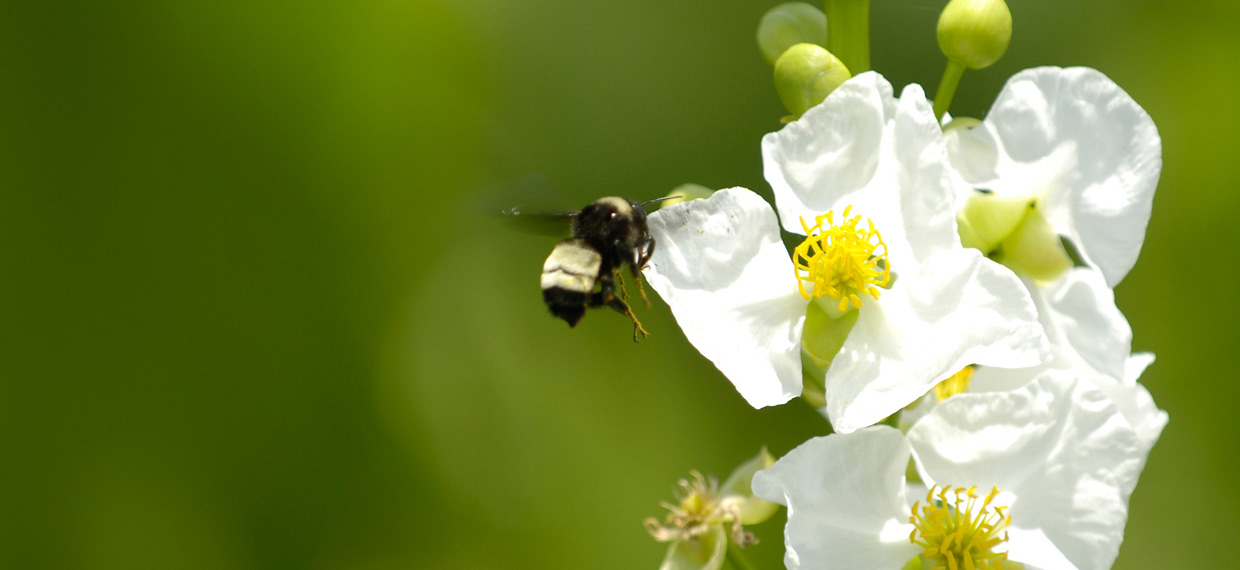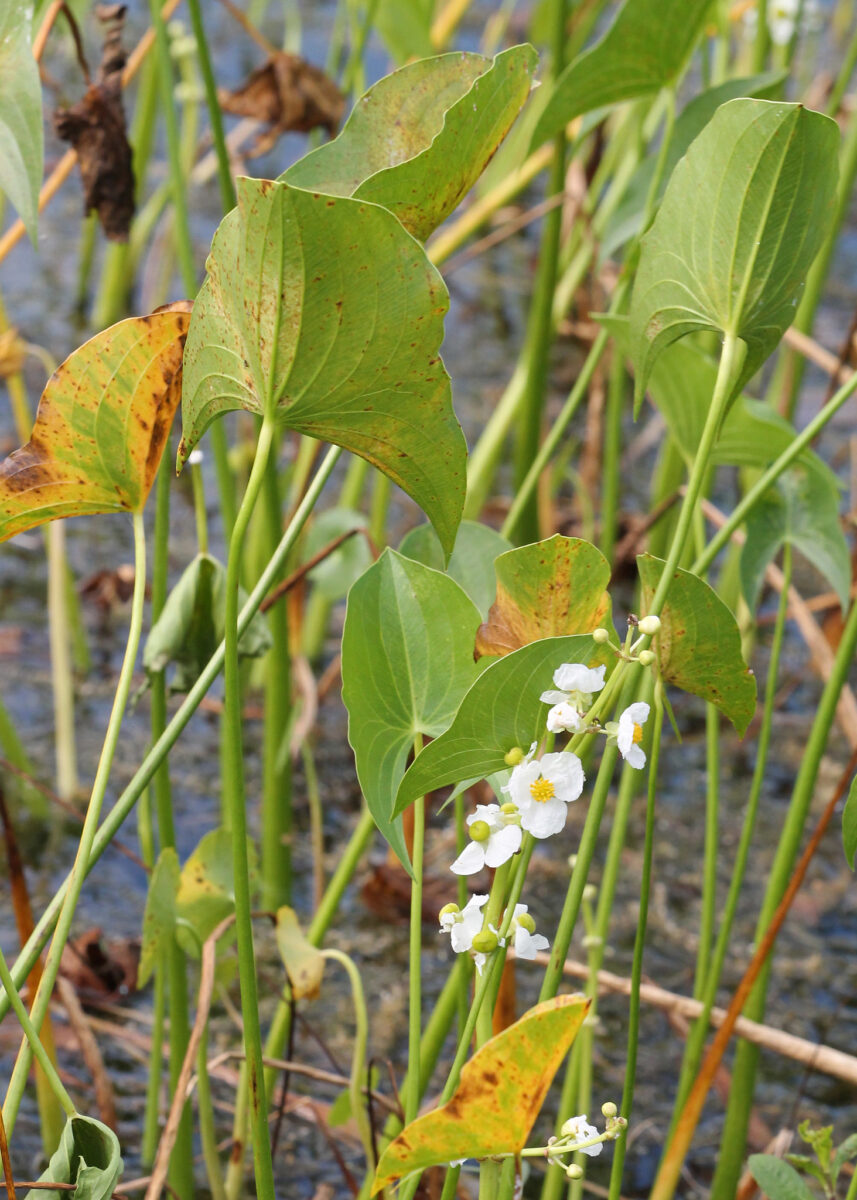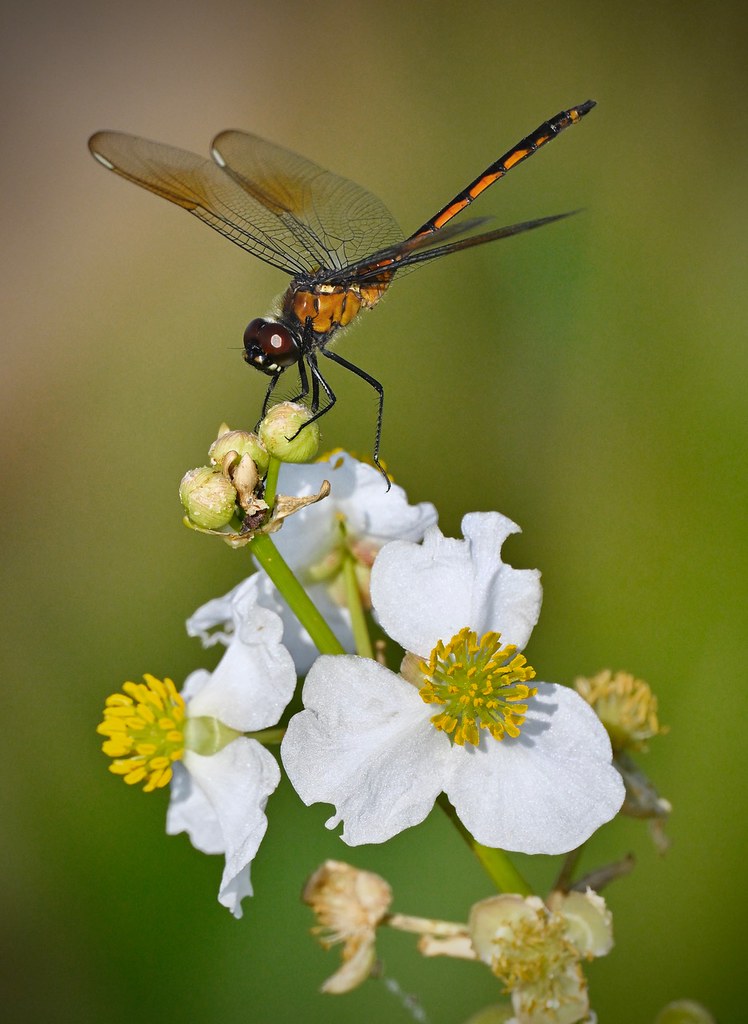Broadleaf arrowhead
Pictured above: Bee approaching Arrowhead (Sagittaria sp.) flower by John Moran. Click on terms for botanical definitions. View post as a PDF.
Also known as Duck potato, Broadleaf arrowhead (Sagittaria latifolia) is an emergent aquatic wildflower that occurs naturally in the shallow waters of marshes, swamps, streams, spring runs, rivers, lakes and roadside ditches. It typically blooms spring through fall, attracting a variety of pollinators. Its fruits are eaten by birds and other wildlife. Thirteen species of Sagittaria occur in Florida — 12 native and one non-native; of these, Broadleaf arrowhead is one of the largest.
Broadleaf arrowhead flowers each have three white petals with yellow centers and three green, often red-tinged, sepals. They are born on erect, elongated stalks. The dark green leaf blades arise from long petioles at the base of the plant. As the common name suggests, leaves are arrow-shaped (up to 14 inches long) and often quite broad (more than 8 inches across), although they may also be narrow (less than 2 inches across).
The genus name Sagittaria is derived from the Latin word sagitta, meaning “arrow.” It refers to the leaf shape of most species within the genus. The common name “duck potato” comes from the potato-like corms that the plant produces. Despite the name, ducks do not eat the corms, although larger waterfowl like geese and swans will. Humans, also, have been eating them for centuries.
Family: Alismataceae (Water plantain family)
Native range: Mostly throughout Florida
To see where natural populations of Broadleaf arrowhead have been vouchered, visit www.florida.plantatlas.usf.edu.
Lifespan: Perennial
Soil: Rich, saturated to inundated soils
Exposure: Full sun
Growth habit: up to 3’+ tall
Propagation: Seeds, division of rhizomes
Florida regions of landscape suitability: North, Central, South
Garden tips: Broadleaf arrowhead is best suited for water gardens, retention ponds and drainage swales as it prefers to be inundated most of the time. It also does well in a wet container garden.
Broadleaf arrowhead is occasionally available from nurseries that specialize in Florida native plants. Visit www.PlantRealFlorida.org to find a nursery in your area. Seeds may be available from the Florida Wildflower Growers Cooperative at www.FloridaWildflowers.com.
Learn more about Broadleaf arrowhead from the Florida Native Plant Society and the Institute for Regional Conservation.



